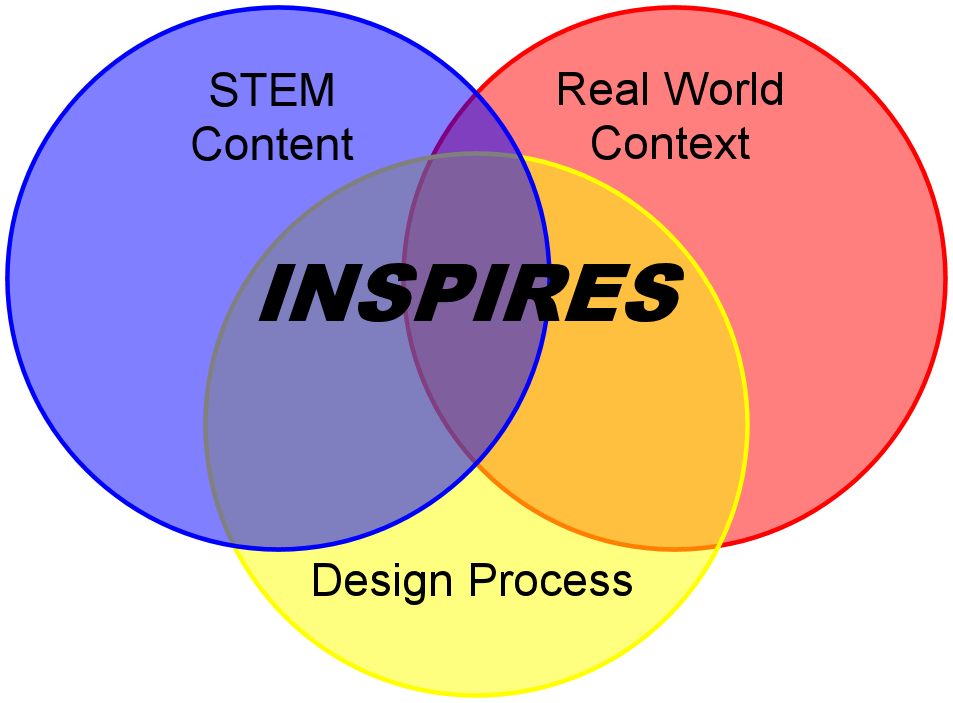
Example from Engineering in Healthcare:
A Hemodialysis Case Study
An introductory video focuses on a teenage girl with kidney failure who regularly undergoes hemodialysis. The video describes her treatment, introduces her doctor, and explains the function of a modern hemodialysis machine (Context). Student teams are challenged to design, build, test and refine a system that mimics attributes and functions of a hemodialysis system including the removal of a minimum of 2.5 mg of "waste" from simulated "blood". Design teams are challenged to maximize efficiency while minimizing system cost. (STEM Practices). After watching the video and receiving the challenge, students use a "Think, Pair, Share" strategy to reach consensus (Collaboration) on key ideas as well as the criteria/constraints required for a design solution.
As students work to solve the design challenge, they are introduced to the engineering design process as a rational and methodical cycle of steps (STEM Practices). The various steps are explicitly addressed during lessons to ensure that students understand each process they use (Metacognition). A classroom poster is used to facilitate explicit connections (Public Artifacts). To understand the various design constraints and criteria and make informed design decisions, the students learn relevant scientific and mathematical concepts to quantitatively assess and refine their design (Standards Based).
Students learn concepts associated with diffusion/selective diffusion, equilibrium, membrane structure/function and fluid flow. Science concepts are introduced through "just in time" phenomena-first activities (Context) and inquiry-based investigations (STEM Practices). First, teams are presented with a mini design challenge in which they must design and test an apparatus to separate Rice KrispiesTM from a complex mixture of breakfast cereals. This hands-on exercise is used to introduce the concept of separating a component from a mixture in a way that is visual to the learner. It is also used to reintroduce the engineering design process (Context/Standards). Students must consider the physical properties of the various cereal components and decide on properties that could be used as a basis for separation.
Prior to receiving teacher approval to start device construction and testing, individual group members submit potential design solutions and engage in discussion to build consensus (Collaboration) on a prototype design. Group presentations of designs and design decisions link the exercise to the overarching hemodialysis design challenge.Students learn more about the function of the kidneys and how dialysis works. Concepts such as concentration, concentration gradient, molecular motion and diffusion are introduced through a serious of hands-on exercises (Standards Based). Students visualize selective diffusion by observing the movement of a dye across a semi-permeable membrane. Students then explore various factors that influence the rate of diffusion and the total amount of mass transfer in a given time period, including temperature, molecular weight, membrane pore size and membrane surface area. Finally, students investigate ways to make fluid flow and learn how fluid flow is measured and described quantitatively. This allows design teams to consider how fluid flow may be used in the design of a hemodialysis system.
Students use online models and animations to illustrate the "non-visible" mechanism(s) driving the observed macroscopic events. Molecular motion and diffusion are stressed, linking the online visualization to the hands-on activities. Computer-based mathematical simulations are used prior to the final design and build phase allowing students to alter design parameters and quantify their impact on the system efficiency (STEM Practices). Students then plan, build, test and refine a "hemodialysis system" (Integrates all principles). Teams present their final designs with an analysis of design decisions in an open forum (Collaboration/Public Artifacts). Concepts and key ideas are reinforced and continuity between lessons is maintained through the use of a design notebook and by having students post artifacts representing their understanding (Metacognition) on a class artifact board (Public Artifacts).